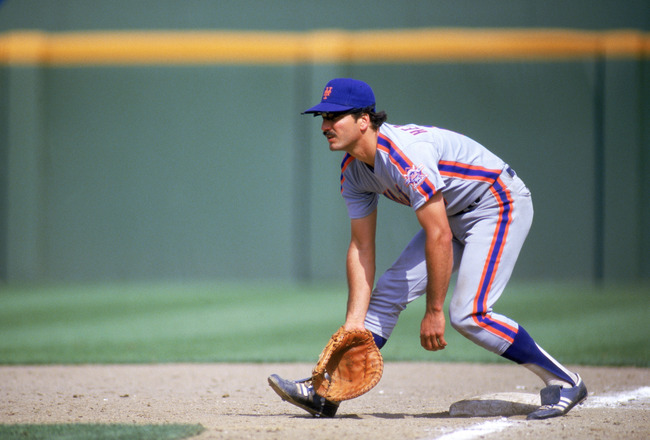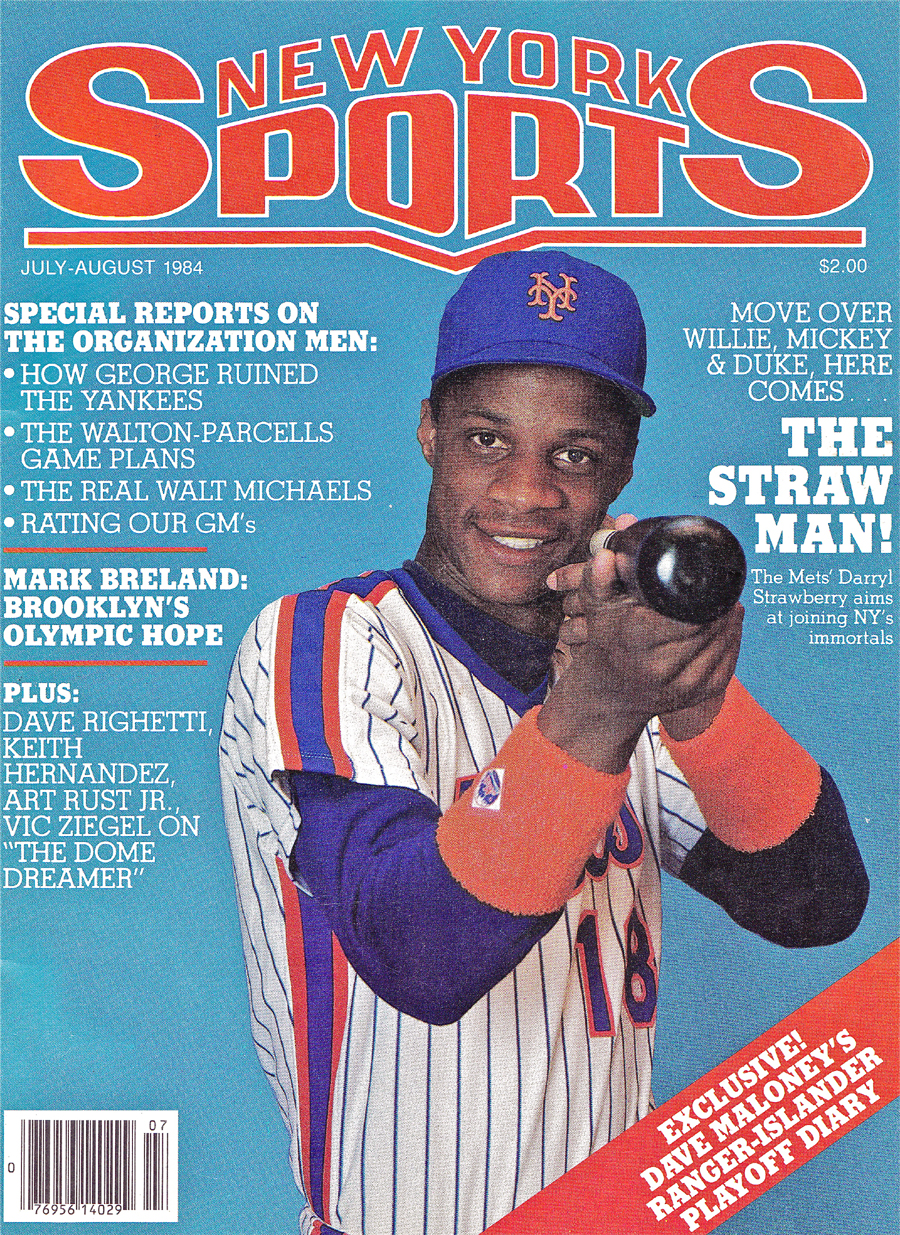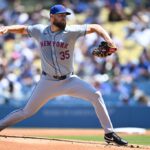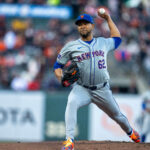Introduction by Stephen Hanks
After Gary Carter’s tragic and untimely death last month, MMO posted a profile of the Hall of Fame catcher that was supposed to be part of the September/October 1985 issue of my magazine New York Sports, but which was never printed. The piece generated such a positive reaction, that MMO has asked me to unearth other Mets-related stories the magazine published between our launch in April 1983 and our last issue in 1985.
One of the magazine’s many popular departments was one we called “Clinic Time,” that wonderful expression Marv Albert came up with during the glory days of the New York Knicks to describe when the team was basically taking the opponent to school on the court. This department was where the magazine could feature New York sports athletes who excelled at a particular skill or explain a specific system or strategy employed by aNew Yorksports team manager or coach.
By his second year with the Mets in 1984, it was clear that Keith Hernandez was not only the best fielding first baseman in baseball, but perhaps one of the best to ever play the game. In this piece, award-winning journalist Billy Altman, who like myself was also writing sports for The Village Voice (Billy continues to write for various publications and websites and is a teacher at the School of Visual Arts in New York, and is sometimes an official scorer for Mets and Yankees games) talked with “Mex” himself, as well as teammates and opponents to learn why Hernandez was, as New York Sports called him, “the Baryshnikov of First Base.”
Clinic Time: Keith Hernandez — The Best at First
New York Sports Magazine, June/July 1984 issue. Edited by Stephen Hanks
By Billy Altman
Okay, Met maniacs, get out your standard box score from the April 18th home game against the Montreal Expos (a game our guys won in the ninth, 7-6, on Wally Backman’s bases-loaded, two-out double). At a glance, the box score informs you that the Mets’ number-three hitter and first baseman, Keith Hernandez, went one for four, didn’t score a run, had one RBI, and made no errors. What it won’t tell you is information like this:
In the first inning, Hernandez is holding an Expos’ runner on. Before pitcher Walt Terrell comes out of his stretch, Hernandez moves quickly off the bag, causing the runner, who now thinks Terrell is going home, to lengthen his lead off first. Hernandez then darts back to the bag and takes a pickoff throw which catches the runner breaking for second. In the ensuing rundown, he dives to tag the runner out. Two innings later,Bryan Little, the National League’s best bunter, drags one between the pitcher’s mound and first. In one fluid motion, Hernandez races in, grabs the ball with his glove, and dives to his left, just nipping a speeding Little on the arm. (“I’m pretty good against the bunt,” Hernandez boasts.) Still later in the game, shortstop Jose Oquendo, hurrying a throw, makes Hernandez handle a difficult hop. But Keith’s soft hands scoop it up so effortlessly; he almost appears nonchalant as he cradles the ball in his glove. The play looms even larger when the next two Expo batters single. Had Hernandez not made these plays, especially the last one that prevented a big inning, the Mets would very likely have lost.
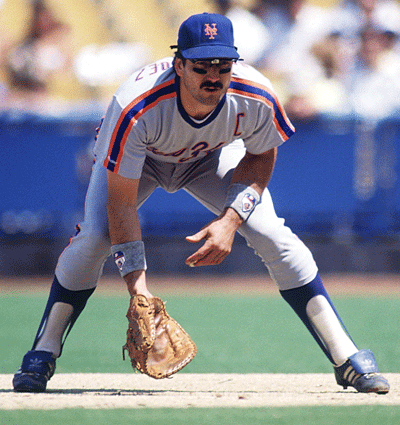 Ask Keith Hernandez about all his activities around first during this particular ballgame and he’ll just shrug his shoulders, smile, and tell you very matter-of-factly that he’s just doing his job, just playing first base as well as he can. And how well does he play the position? Since becoming a regular in ‘76, the 30-year-old Hernandez has been awarded six Golden Gloves as the finest fielding first sacker in the N.L. His grace, style, quickness and flawless execution make him seem like a ballpark Baryshnikov. Keith Hernandez, quite simply, performs all the moves of a major league first baseman better than almost anyone who’s ever played the position. Says Jose Oquendo, who‘s played with Hernandez since the Mets acquired Keith from St. Louis for pitcher Neil Allen last June: “I know that if I throw the ball anywhere near Keith, he’ll catch it, even if it’s in the ground or way off line. You never think that he won’t catch it; that’s how good we all know he is.”
Ask Keith Hernandez about all his activities around first during this particular ballgame and he’ll just shrug his shoulders, smile, and tell you very matter-of-factly that he’s just doing his job, just playing first base as well as he can. And how well does he play the position? Since becoming a regular in ‘76, the 30-year-old Hernandez has been awarded six Golden Gloves as the finest fielding first sacker in the N.L. His grace, style, quickness and flawless execution make him seem like a ballpark Baryshnikov. Keith Hernandez, quite simply, performs all the moves of a major league first baseman better than almost anyone who’s ever played the position. Says Jose Oquendo, who‘s played with Hernandez since the Mets acquired Keith from St. Louis for pitcher Neil Allen last June: “I know that if I throw the ball anywhere near Keith, he’ll catch it, even if it’s in the ground or way off line. You never think that he won’t catch it; that’s how good we all know he is.”
Hernandez’s training as a first baseman began at age eight and his father, John, was the teacher. “As a lefthander,” Keith recalls, “my choice of positions was already limited to first or the outfield. My dad had played for six years as a first baseman in the Cardinals’ organization, so I guess it was natural that I’d wind up in the infield.”
While Hernandez says that he’s always had confidence in his defensive skills, he also acknowledges former Cardinal coach Preston Gomez as having a huge influence on his development as a fielder. “When I first got to St. Louis in ‘74 and ‘75,” recalls Keith, “I was riding the bench quite a bit, and Preston just took me under his wing. He made sure that I wasn’t getting lazy, that I got a good half hour of ground balls every day. Preston had this knack of hitting both hard and soft grounders that made you go that extra foot to snare them, and that really helped increase my range.”
But Hernandez feels that there’s more to being an accomplished fielder than just taking a bazillion ground balls. “A lot of it is instinctive—reacting to the ball, knowing the particulars of the situation, always asking yourself, ‘if the ball’s hit to me, where am I going with it?’” And, he adds, the maxim about wanting the baseball hit to you is one of the game’s authentic truisms. “The minute you’re hoping it’ll go to someone else—especially in important situations—is the time you’re most likely to make a costly error.”
Hernandez relies on his personal knowledge of hitters in determining where to position himself.” You know how some fielders need to know what the pitcher’s throwing?” he asks. “Well, I find that hitters have individual tendencies no matter where the ball is pitched.” But how does he seem to corral almost every ball hit in the hole between first and second? “You get beat in the hole much more than down the line, so I tend to play off the line quite a bit,” he explains. “I feel that I can get to a lot of those balls because I know I have good range and I anticipate well.” The only times Hernandez wants to know about a specific pitch is when an off-speed pitch is being thrown to a left-handed batter. “A lefty will usually pull the off-speed pitch, so since the second baseman can see the catcher’s signs and I can’t, he’ll signal me so I can make the adjustment.”
Even more adjustments are necessary in turning the difficult first-to-shortstop-to-first double play, a maneuver which demands that a first baseman field, throw accurately, return to the bag and receive any kind of throw, and all quicker than you can say “3-6-3.” On this play, Hernandez (who has led N.L. first basemen in DP’s five times), will almost never step on first before throwing to second which would negate the force play.
“Besides,” he explains, “the lead runner is always the one you want erased. I’ll go to the bag first only when the ball is hit down the line and I have to backhand it. When holding a runner on, you’ll get a ground ball quickly, which is very key because the throw will usually get to second before the runner can take out the shortstop.” But that throw has to be just right. “It has to be a true one, one that doesn’t sink or curve, so I always try to throw over the top rather than sidearm. That goes for whether the throw is to the inside of the bag when I’m playing up, or to the outside if I’m playing back. But it helps being a lefty. For a righty first baseman, turning the DP is almost impossible no matter what side of him the ball’s hit to because he must spin his body around to make the throw to second.”
In taking throws himself, Hernandez prefers a long hop if he must take a hop at all. “If the fielder is off balance and has to make a throw from deep in the hole, it’s sometimes better for him to bounce it to me on the long hop,” he explains. “Especially on Astroturf, where it‘ll bounce right to me. A guy like Davey Concepcion is great at that kind of throw; gives his first baseman a nice, easy, long hop to handle. [Garry] Templeton, Ozzie (Smith), Oquendo—all the guys with the great arms do that well.’’ And he’s not anti-Astroturf, either. “Except for when the ball hits a seam,” he admits. “There really aren’t any bad hops on the turf and that’s a plus. On dirt, you have to play the ball and the hop much more, and you must take infield very carefully before every game to get the feel of the field on that particular day.”
His yearly Golden Glove awards are a testament to Hernandez’s consistency, which he maintains whether he’s on a hitting tear or mired in a slump. “You can never let what’s happening with the offensive part of your game affect your play in the field,” he insists, echoing the conventional wisdom. “When you’re in a slump you really have to bear down, stay alert, and be more ready defensively than ever.” Such bad stretches don’t often happen to a lifetime .299 hitter, who has won a batting title and a Most Valuable Player award (both in 1979). And the rest of the National League is probably thankful for that. Just imagine Keith Hernandez playing an even tougher first base. A ball might never get through the right side of the diamond.

